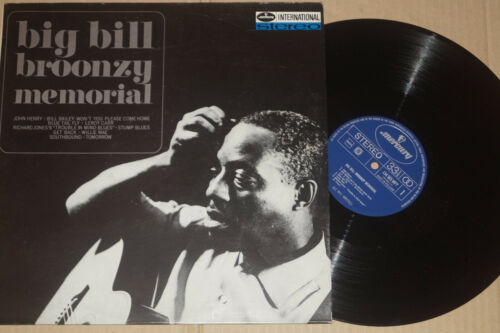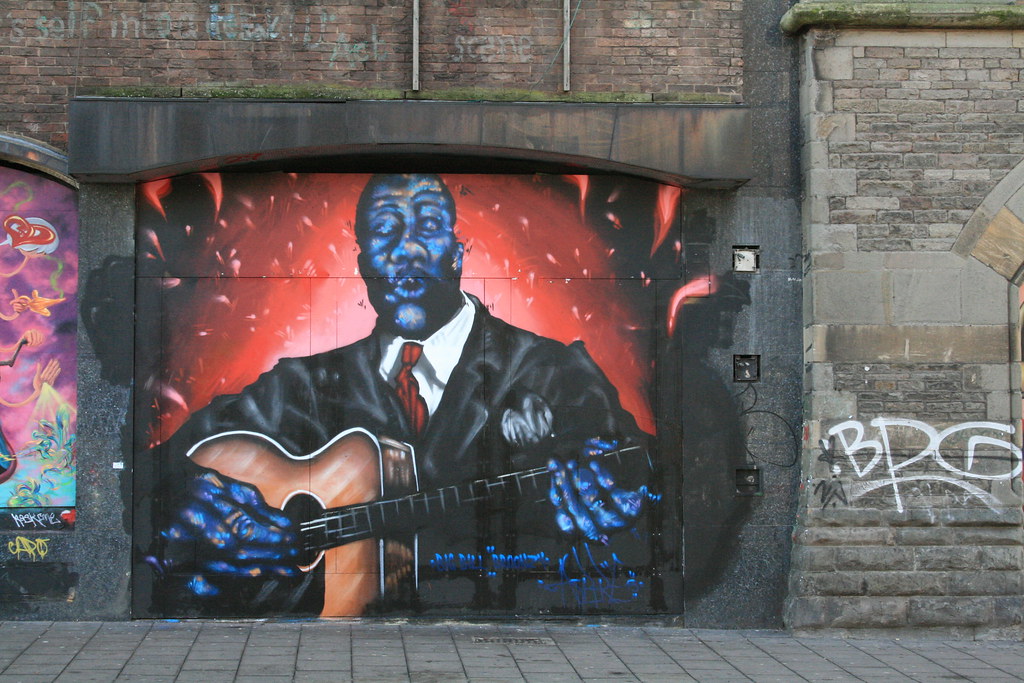The Beginnings of Big Bill Broonzy
The story of pre-war American blues is not complete without Big Bill Broonzy unlike many great Blues players Big Bill Bronzy Guitar Bluesman was a Bandless Bluesman as he only played his acoustic and sang on stage in a pure raw blues style so Big Bill Broonzy never played with a band and he also had damaged vocal chords. Born as William Lee Conley Broonzy, this Bandless Bluesman recorded more than 250 tracks between 1925 and 1952. Although some sources trace his birth year to 1903, Broonzy insisted he was born in Scott, Mississippi in 1893.
The singer-songwriter may have emerged during the traditional blues era, but he was quick to reinvent himself by fusing rural and urban styles. Broonzy entered the recording scene as a guitar accompanist before transitioning into a singer. Later in his career, the superstar was also a natural leader, mentoring artists like Muddy Waters, Memphis Slim, and Jimmy Rodgers.
Bandless Bluesman Big Bill Broonzy Guitar Key To The Highway
You cannot leave out “Key to the Highway” when listing blues songs with unclear origins. Though most people link this track to Big Bill Broonzy, keyboard wizard Charlie Segar was the first to record it in February 1940. Months later, Broonzy added some guitar magic to Jazz Gillum’s version before recording his rendition in 1941.
Gillum also made an appearance on Broonzy’s cover by playing the harmonica. Each artist may have contributed to composing “Key to the Highway”, but Broonzy’s eight-bar acoustic cover stole the show. This version even entered the Blues Hall of Fame in 2010. But despite its rating as a classic, this song only appeared once on the Billboard charts. Different artists have covered Broonzy’s version, including Brownie McGhee in 1946, Little Walter in 1958, and John Lee Hooker in 1959.
Although the Rolling Stones made a rendition in 1964, the song wasn’t released until years later. Similarly, the rock band featured 30 seconds of “Key to the Highway” in their “Dirty Work” album to honor long-standing keyboardist Ian Stewart who succumbed to a heart attack. Another Rolling Stones member, Keith Richards, added the track to his 2015 Desert Island Discs collection, drawing inspiration from Little Walter’s cover. “Key to the Highway,” tells the story of a folksinger who wanders away from home after breaking up with his lover.
Mance Lipscomb, who also covered the song, interpreted “key to the highway” as someone’s feet. Speaking to Studs Terkel, Broonzy described how different artists can add a personal touch to a traditional tune such as “Key to the Highway”. You can find the song in various genres, including a big band version by Dinah Washington and an accordion cover by Clifton Chenier. Another memorable version is the jam rendition by Derek and the Dominos, with Duane Allman and Eric Clapton making impressive vocal changes.
Eric Clapton has covered this track many times, singing with The Allman Brothers and BB King on separate occasions. In a 2003 Guitarist Magazine interview, Clapton described the experience of seeing Broonzy play “Hey Hey” as “looking into heaven”. Clapton went ahead to explore his other songs, falling in love with Broozy’s cover of “Key to the Highway”. According to Clapton, this track captured what it means to be an artist and journeyman.
Big Bill Broonzy Guitar Backwater Blues
This is the opening track in the legend’s 1956 album, Big Bill Broonzy Sings Folk Songs. However, Broonzy’s version is just one of this song’s numerous renditions. The original composer, Bessie Smith, released this track in 1927. Though some people associate “Backwater Blues” with the Mississippi Flood of 1927, the floods were at their worst two months after Smith wrote the song. However, going by her touring itinerary and testimonies from other artists, the piece described the 1926 Nashville flood.
In “Backwater Blues”, Smith recounts how floods displaced thousands of victims after it rained nonstop for five days. The narrator wakes up in a flooded neighborhood, leaving her trapped inside her house. She also recalls how people rowed a boat five miles to save her, and although she packed her clothes, she had nowhere to go.
The narrator further recounts standing on a hill and looking at her old home, now destroyed by the raging waters. Big Bill Broonzy has also composed his own flood songs, including Southern Flood Blues and Terrible Flood Blues to document the Mississippi and Ohio River tragedies.
I Feel So Good: The Life and Times of Big Bill Broonzy
This book by Bob Riesman hit the market just seven months apart from another Broonzy bio, “Blue Smoke”. Riesman captures Broonzy’s roots in rural Arkansas and his journey to becoming a world-acclaimed bluesman. The author digs into Broonzy’s past to discover old letters and get a clear picture of Broonzy’s personality. However, Riesman faced the challenge of conflicting information from Broonzy’s personal account, “Big Bill Blues”.
Broonzy used the autobiography to tell stories rather than stating facts about his life. What’s more, he gave countless interviews narrating his personal experiences. In his research, Riesman uncovered disparities in Broonzy’s account and the reality. For instance, Riesman’s evidence proves the singer never served, though Broonzy narrated his time in the military during World War I. According to Riesman, Broonzy may have presented his neighbors’ and brothers’ war stories as his own.
Although the author provides facts, he emphasizes Broonzy’s skill as a storyteller in every stage of his life. The finer details didn’t matter to Broonzy, provided the narrative conveyed his truth. It’s this storytelling talent that elevated Broonzy to the levels of the greatest blues songwriters of all time.

Riesman also narrates monumental events in Big Bill’s career as the Bandless Bluesman, from his 1938 Carnegie Hall appearance to his contribution to folk revival after World War II. Furthermore, the author takes you to Europe, where Big Bill performed before packed concert halls and jazz clubs in the ’50s. This musical era paved the way for the blues-rock wave in the ’60s.
Big Bill Broonzy This Train
Additionally, Riesman describes Broonzy’s complicated personal life in the book. Big Bill was married thrice, becoming a father at a young age. The author also sheds light on Bill’s last days when he lost his voice before succumbing to cancer in 1958. Crowds of fans and artists attended his funeral, with gospel legend Mahalia Jackson leading a hymn at the service. The pallbearers comprised of three black and three white people to respect Broonzy’s anti-discrimination beliefs. You can watch this documentary for a front-row seat to the bluesman’s life.

Cover Photo credit “Big Bill Broonzy” by KylaBorg is licensed under CC BY 2.0
